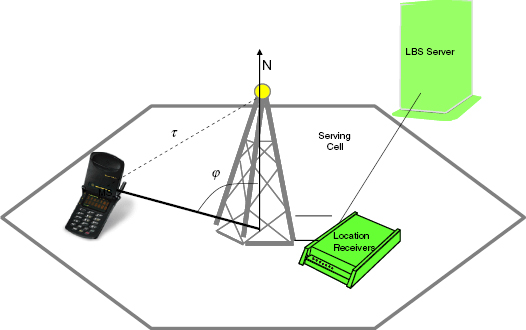CHAPTER NINEPrediction of Operational Characteristics of Adaptive Antennas
In adaptive antenna performance, as mentioned in Chapters 7 and 8, it is very important to predict the position of a desired subscriber within a certain area. To obtain information about the direction of the subscriber's signal as well as his range, designers of wireless networks need to carry out some special experiments [1–14]. The direction of the subscriber is determined by the distribution of the recording signal in the azimuth, elevation, and time delay domain, as shown in Figure 9.1. Thus, the range to any subscriber located within the cell of service, as well as the error of its estimation, can be totally determined from the joint time delay, azimuth, and elevation (for subscriber located at any height as shown in Figure 9.2) distribution of the arriving signal. Furthermore, when the adaptive antenna “searches” for the mobile subscriber (MS) or mobile vehicle (MV), it is very important to obtain information about its velocity, based on the signal distribution in the Doppler shift domain. In Chapter 8, we showed that this can be done theoretically using the proposed unified stochastic multiparametric approach combined (or not, depending on the built-up terrain scenario) with the street-waveguide model [1–3, 15–23] as shown in Figure 9.3.

Get Radio Propagation and Adaptive Antennas for Wireless Communication Networks, 2nd Edition now with the O’Reilly learning platform.
O’Reilly members experience books, live events, courses curated by job role, and more from O’Reilly and nearly 200 top publishers.

